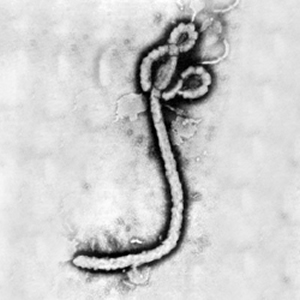Teixobactin: Difference between revisions
(Created page with "{{Uncurated}} This is the leader section -- here you can write a short description of your topic and why it is interesting. The goal is for this to quickly cover the main idea...") |
No edit summary |
||
| Line 1: | Line 1: | ||
{{Uncurated}} | {{Uncurated}} | ||
Teixobactin is a newly discovered antibiotic that is effective against gram positive bacteria including drug-resistant strains, such as methicilin-resistant Staphylococcus aureus (MRSA) and vancomycin-resistant enterococci (VRE), without detectable development of resistance. The antibiotic, isolated from the soil using a device called the iChip, works by inhibiting cell wall synthesis. | |||
==Section 1== | ==Section 1== | ||
| Line 35: | Line 35: | ||
==References== | ==References== | ||
1. [http://www.nature.com/nature/journal/v517/n7535/full/nature14098.html Ling, L., Schneider, T., Peoples, A., Spoering, A., Engels, I., & Conlon, B. et al. (2015). A new antibiotic kills pathogens without detectable resistance. Nature, 517(7535), 455-459. doi:10.1038/nature14098] | |||
2. [http://aem.asm.org/content/76/8/2445.full Nichols, D., Cahoon, N., Trakhtenberg, E., Pham, L., Mehta, A., & Belanger, A. et al. (2010). Use of Ichip for High-Throughput In Situ Cultivation of "Uncultivable" Microbial Species. Applied And Environmental Microbiology, 76(8), 2445-2450. doi:10.1128/aem.01754-09] | |||
3. [http://www.nature.com/nature/journal/v517/n7535/full/nature14193.html Wright, G. (2015). Antibiotics: An irresistible newcomer. Nature, 517(7535), 442-444. doi:10.1038/nature14193] | |||
<!--Do not remove this line--> | <!--Do not remove this line--> | ||
Revision as of 23:41, 21 March 2015
Teixobactin is a newly discovered antibiotic that is effective against gram positive bacteria including drug-resistant strains, such as methicilin-resistant Staphylococcus aureus (MRSA) and vancomycin-resistant enterococci (VRE), without detectable development of resistance. The antibiotic, isolated from the soil using a device called the iChip, works by inhibiting cell wall synthesis.
Section 1
At right is a sample image insertion. It works for any image uploaded anywhere to MicrobeWiki. The insertion code consists of:
Double brackets: [[
Filename: Ebola virus 1.jpeg
Thumbnail status: |thumb|
Pixel size: |300px|
Placement on page: |right|
Legend/credit: Electron micrograph of the Ebola Zaire virus. This was the first photo ever taken of the virus, on 10/13/1976. By Dr. F.A. Murphy, now at U.C. Davis, then at the CDC.
Closed double brackets: ]]
Other examples:
Bold
Italic
Subscript: H2O
Superscript: Fe3+
Overall paper length should be 3,000 words, with at least 3 figures with data.
Section 2
Include some current research in each topic, with at least one figure showing data.
Section 3
Include some current research in each topic, with at least one figure showing data.
Further Reading
[Sample link] Ebola Hemorrhagic Fever—Centers for Disease Control and Prevention, Special Pathogens Branch
References
Edited by (your name here), a student of Nora Sullivan in BIOL168L (Microbiology) in The Keck Science Department of the Claremont Colleges Spring 2014.

